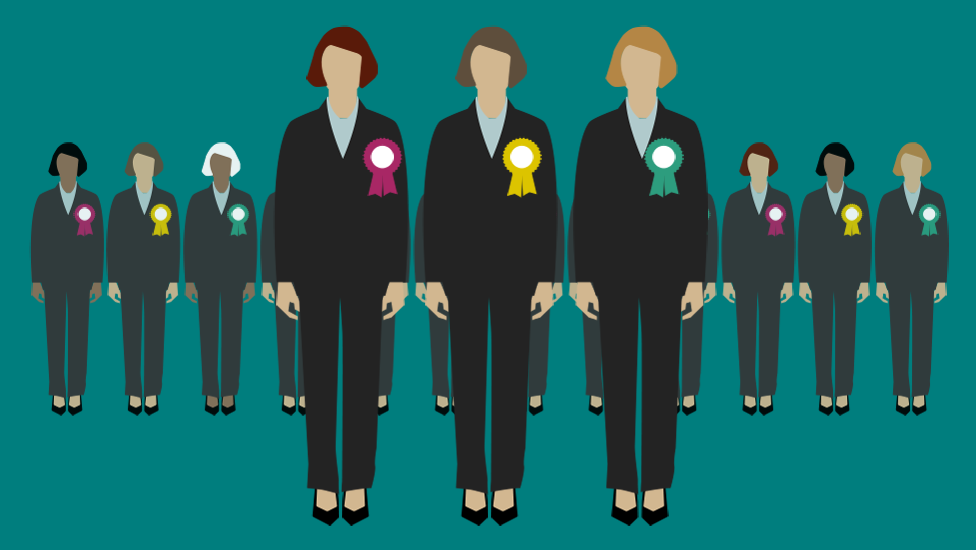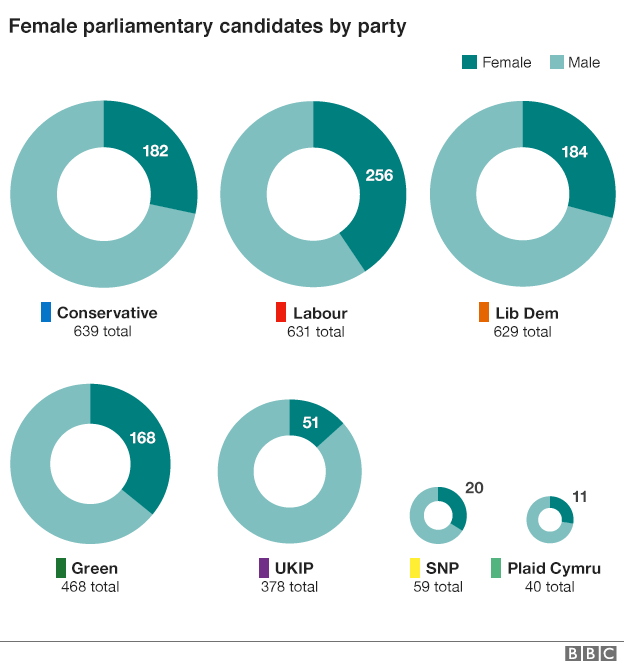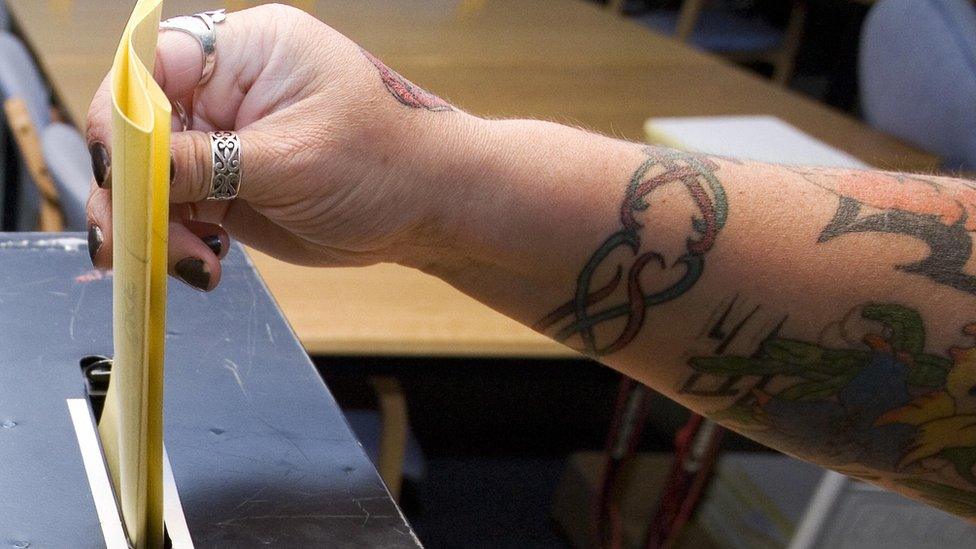Election 2017: How many women might win power?
- Published

There are more than 3,300 candidates hoping to win one of the 650 seats in the UK's House of Commons on 8 June.
What do we know about those jockeying for position in the race for election?
1. There are more women running for office than ever before
Overall, about 30% of candidates are women - up from the previous record of 26% in 2015, although the actual number of women standing is down from 1,036 to 983. However, parties vary.

The Conservatives are the only party to campaign in all four nations of the UK
Labour is putting forward the highest percentage of female candidates of any major party, at 41%. The Greens are on 36%, the SNP on 34%, and the Lib Dems on 29%.
The Conservatives and Plaid Cymru, both of which are led by women, are neck-and-neck towards the back of the pack with 28% of their parliamentary candidates female.*
The party with by far the fewest female candidates is UKIP, on 13%.
2. Labour has more women defending seats won in 2015
Labour also has a higher proportion of women standing in constituencies that the party won in 2015.

The Lib Dems campaigned in 631 seats in 2015, but won just eight seats. Meanwhile the SNP lost just three of Scotland's 59 parliamentary constituencies
But the two biggest parties are fielding very similar proportions of women in seats they lost by less than 10% in 2015.
So if Labour increases its share of the vote in each of these places by five percentage points, it would gain 16 women and 32 men. A similar increase for the Conservatives would give them 18 women and 30 men.
3. The Conservatives have more candidates than any other party, but fewer than in 2015
With candidates in all British constituencies (bar one) and seven of the 18 seats in Northern Ireland, the Conservatives are standing in more of the country than any other party. In 2015 they contested 16 Northern Irish seats. Labour and the Lib Dems do not stand in Northern Ireland.
Sorry, your browser cannot display this content.
The Lib Dems have two fewer candidates than Labour, as they are not standing in Brighton Pavilion, which returned the UK's only Green MP in 2015, or in Skipton and Ripon in Yorkshire, reportedly to bolster the chances of the local Green candidate.
4. Very few MPs are quitting
Perhaps because they last stood for election only two years ago, just 14 Labour MPs and 12 Conservatives in the 2015-17 Parliament are not standing again.

Compared with previous general elections, these numbers are quite small. Thirty-nine Labour MPs and 38 Conservatives decided not stand for re-election in 2015. The average number of MPs standing down at general elections between 1979 and 2015 is about 90.
Of the 12 Conservatives standing down in 2017, 11 are men, but six of the candidates vying to replace them are women.
For Labour, 11 of the 14 standing down are men, and 10 of the candidates in their former seats are women.
* The Speaker of the House of Commons is an MP and has to stand for re-election as Speaker in their constituency at every general election.
Traditionally the biggest parties in the House of Commons do not stand against the Speaker however some parties, such as UKIP, do.
The current Speaker, John Bercow, is standing for election in Buckingham.
The Speaker is a neutral figure in Parliament, so Mr Bercow is no longer a member of the Conservative Party as he was before his election to the role (by parliament).
However, for the purposes of calculating the number of seats belonging to each party - and calculating those held, gained or lost by each party - Mr Bercow's seat is regarded as being a Conservative constituency as he won it for the party in 1997, 2001 and 2005 before being elected speaker.
For this reason, Mr Bercow is included in the Conservatives' tally of candidates on this page.
The BBC followed the same principle in 2005, when previous Speaker Michael Martin's Glasgow Springburn seat was added to the Labour party's tally of MPs.
- Published2 June 2017

- Published15 May 2017